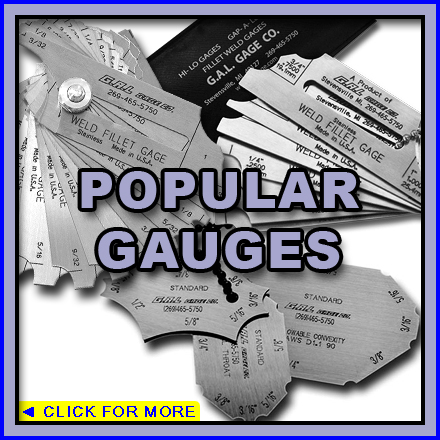Top Methods for Measuring Gauge Fillet Weld Precisely
Top Methods for Measuring Gauge Fillet Weld Precisely
Blog Article
Fillet Weld Layout Techniques: Optimizing Joint Performance and Appearance for Structural Integrity
In the world of structural design and manufacture, the relevance of fillet weld design techniques can not be overemphasized. By diligently thinking about variables such as weld account optimization, material selection, joint prep work strategies, welding procedure performance, and visual enhancement techniques, designers and fabricators can attain a harmonious equilibrium between capability and appearance in their bonded frameworks.
Weld Account Optimization


Attaining an ideal weld profile entails a careful consideration of factors such as product thickness, joint configuration, welding placement, and preferred welding speed. In addition, the choice of appropriate welding criteria, such as voltage, present, and travel rate, is essential in regulating the form and dimensions of the fillet weld. Making use of sophisticated welding techniques, such as pulse welding or robot welding, can even more improve the weld profile to fulfill certain design needs and quality criteria.
Essentially, weld account optimization is a fundamental aspect of fillet weld layout that straight influences the overall efficiency and integrity of welded joints in architectural applications.
Product Choice Factors To Consider
When taking into consideration product choice for fillet weld design, the compatibility of the base metals is a crucial factor affecting the architectural stability of the joint. It is crucial to pick materials that not only bonded together effectively yet also possess comparable mechanical residential properties to make sure the load is uniformly dispersed between the weld and the base steels. Welding materials with greatly various properties can result in concerns such as stress concentrations, premature joint failing, or fracturing.
Additionally, the environment in which the bonded structure will operate need to be taken right into account when selecting materials. Aspects like deterioration resistance, temperature level fluctuations, and direct exposure to chemicals can all affect the durability and efficiency of the weld joint. By picking products that appropriate for the desired application and setting, the overall resilience and dependability of the welded joint can be substantially improved.
As a result, complete factor to consider of material compatibility and environmental elements is vital in making sure the weld joint's stamina, toughness, and total structural stability.

Joint Prep Work Strategies
Thinking about the essential role material choice plays in making sure the architectural honesty of fillet weld joints, it is essential to execute accurate joint prep work methods that maximize the link in between the base steels. Joint prep work is a critical action that straight affects the top quality and toughness of the weld.
Furthermore, proper fit-up of the joint is important to guarantee uniform distribution of the welding material and prevent defects like incomplete infiltration or too much build-up. Beveling the sides of the base metals can create a groove that allows for deeper weld infiltration and a more powerful bond. Furthermore, tack welding the elements in position before the final weld aids keep positioning and reduces distortion during the welding process. By diligently adhering to these joint prep work techniques, welders can enhance the total efficiency and looks of fillet weld joints while making sure structural soundness.
Welding Process Performance
Effective welding processes are crucial for attaining ideal efficiency and high quality look at here in fillet weld fabrication. One crucial element of boosting welding procedure effectiveness is selecting the suitable welding technique. Aspects such as material kind, joint design, and welding setting must be very carefully considered to determine the most ideal method. Procedures like gas steel arc welding (GMAW) and flux-cored arc welding (FCAW) are typically made use of for fillet welds due to their versatility and speed.
Routine calibration of welding makers, assessment of consumables, and maintenance of welding torches can avoid downtime and rework, ultimately conserving time and sources. Well-trained welders are much more proficient at adjusting criteria, repairing problems, and maintaining consistent weld top quality.
Aesthetic Enhancement Methods
To enhance the high quality of fillet weld manufacture, applying aesthetic improvement approaches can play an essential role in guaranteeing precision and accuracy during the welding process. Visual help such as weld dimension determines and multiplying lenses can assist in analyzing weld accounts and measurements properly. By incorporating these visual enhancement methods into the welding procedure, welders can attain not just structurally audio fillet welds however also visually appealing outcomes that fulfill market requirements.

Final Thought
In verdict, enhancing fillet weld layout involves cautious factor to consider of weld profile, material choice, joint prep work, welding process effectiveness, and aesthetic improvement methods. By carrying out these approaches, structural stability can be boosted while additionally achieving aesthetic charm. It is essential to prioritize both performance and looks in fillet weld design to make certain the general top quality and longevity of the joint.
By meticulously thinking about elements such as weld account optimization, material choice, joint prep work strategies, welding procedure efficiency, and visual enhancement techniques, producers and engineers can achieve a harmonious find out here now equilibrium in between capability and look in their bonded frameworks.In the realm of fillet weld style, enhancing the weld profile plays a crucial role in guaranteeing structural integrity and efficiency. The weld account, which includes the dimension and form of the weld cross-section, straight affects the distribution of stress and load-bearing capacity within the joint. It is essential to select products that not only weld with each other properly however also possess similar mechanical buildings to make certain the tons is uniformly distributed in between the weld and the base metals - Gauge Fillet Weld.In final thought, optimizing fillet weld layout includes careful factor to consider of weld profile, go to these guys material choice, joint prep work, welding process performance, and visual improvement techniques
Report this page